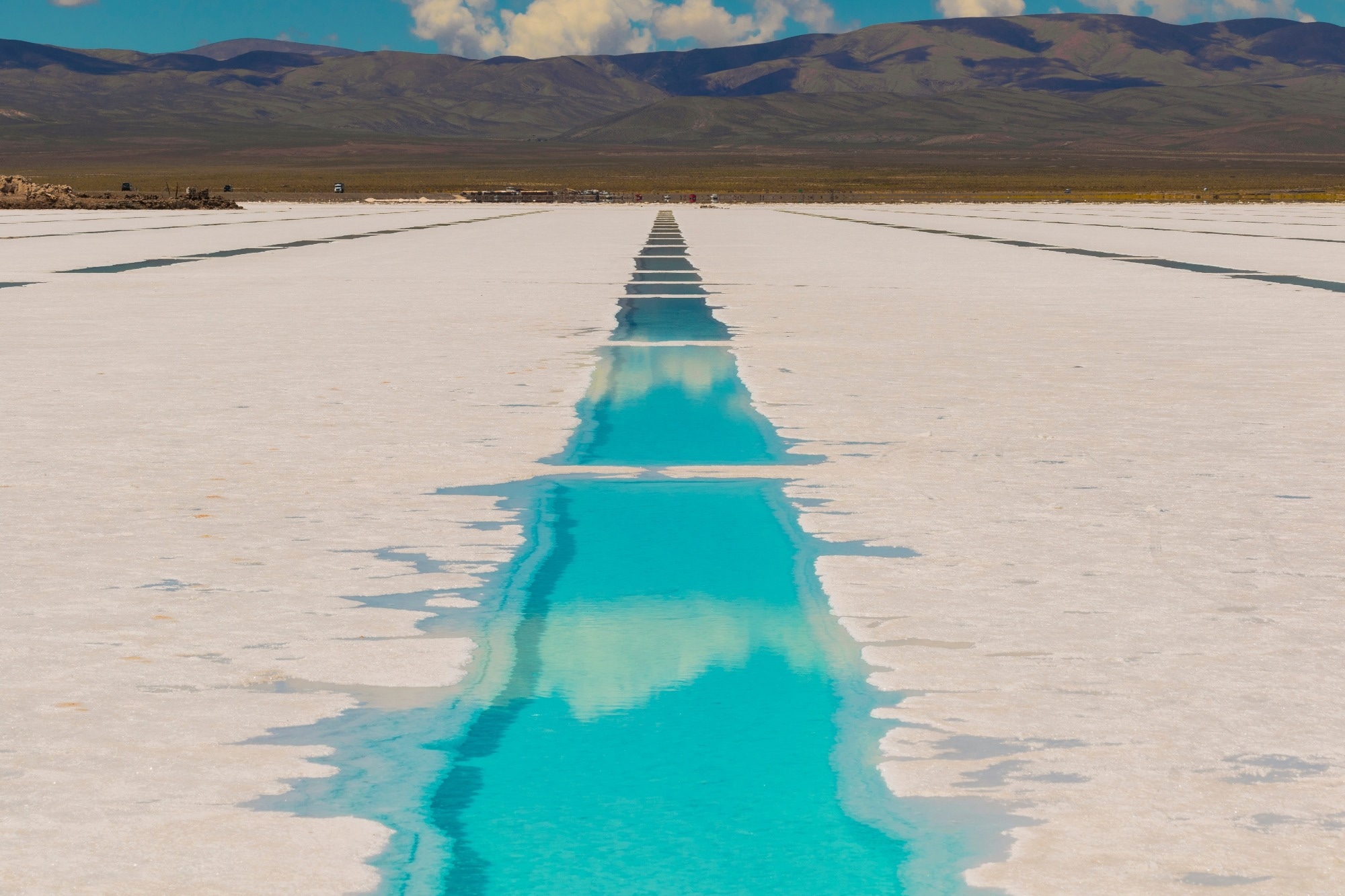Researchers explored the environmental impacts of fluid abstraction in closed-basin lithium brine systems, emphasizing that the extraction of fresh groundwater poses a greater threat to groundwater-dependent ecosystems than brine abstraction. Their study, published in Water Resources Research, highlights the need for sustainable lithium mining practices that balance resource extraction with the protection of sensitive wetlands, particularly in water-scarce regions.

Image Credit: Guille Conema/Shutterstock.com
Advancements in Lithium Extraction Techniques
The global shift toward electrification has increased demand for lithium, a key component in lithium-ion batteries for electric vehicles (EVs) and renewable energy storage. Closed-basin brines, high-salinity groundwater reserves in endorheic basins, represent the largest lithium reserves. Concentrated in the “Lithium Triangle” of South America, these brines are located in hyper-arid regions, making the sustainability of mining a key concern.
Traditional lithium extraction relies on evaporation techniques, where brine is pumped to the surface and concentrated in evaporation ponds. While effective, this method consumes both brine and freshwater, resulting in water scarcity and threatening groundwater-dependent wetlands. This has fueled geopolitical tensions regarding whether brine, unsuitable for human or agricultural use, should carry the same ecological burden as freshwater.
In contrast, emerging direct lithium extraction (DLE) technologies offer an alternative, such as extracting lithium with minimal brine drawdown. However, many DLE processes require more freshwater than traditional methods, creating new sustainability challenges. Therefore, understanding the hydrological balance between brine and freshwater extraction is crucial for protecting ecosystems while meeting the growing demand for lithium.
Hydrogeologic Modeling of Salar Systems
To investigate the environmental impacts of lithium mining, researchers developed theoretical groundwater-flow models for three representative salar systems: Salar de Atacama (SdA), Salar del Hombre Muerto East (SdHM East), and Salar del Hombre Muerto West (SdHM West). These models integrate over 40 years of mining data and simulate groundwater dynamics over 200 years under various abstraction scenarios.
The simulations were conducted using SEAWAT, a USGS-modified version of MODFLOW, which is capable of handling variable-density groundwater flow. Key parameters, including recharge rates, evapotranspiration, salinity gradients, hydraulic conductivity, and geologic heterogeneity, were incorporated to evaluate groundwater discharge (QD) to wetlands.
To validate model predictions, the study combined theoretical modeling with remote sensing data from Landsat and Sentinel satellites to track changes in vegetated wetland areas over 35 years near two key sites: the Diffuse South Tumisa Discharge Zone in SdA, affected by brine drawdown, and the Rio Trapiche Vega in SdHM West, impacted by freshwater abstraction. This approach provided a robust framework for understanding how different abstraction strategies influence groundwater-dependent ecosystems.
Impact Assessment of Fluid Abstraction
The modeling outcomes showed that freshwater abstraction had a far greater impact on groundwater discharge to wetlands compared to brine abstraction. Fresh groundwater extraction across all three salar models reduced freshwater QD by 200 % to 2300 % more than halite brine abstraction. Conversely, brine abstraction primarily affected brine QD, with reductions ranging from 300 % to 9600 % compared to freshwater scenarios.
Density-driven storage flux played a key role in shaping these results. Freshwater removal increased fluid density and caused volumetric storage losses, while brine removal lowered density, partially buffering these losses. This explains why distant freshwater wells reduced wetland discharge, whereas brine wells closer to wetlands had a limited impact.
Satellite data confirmed these predictions. At Rio Trapiche Vega in SdHM West, wetland vegetation declined by 90 % following the start of freshwater abstraction. In contrast, the DST Discharge Zone in SdA experienced over 1.2 meters of brine drawdown without major vegetation loss, with wetland health tracking more closely with precipitation patterns than brine levels. These findings highlight that freshwater abstraction is the dominant driver of ecological decline in groundwater-fed wetlands, emphasizing the need for careful management of freshwater resources in lithium mining operations.
Recommendations for Sustainable Practices
This research has significant implications for lithium mining in closed-basin brine systems. It emphasizes that minimizing freshwater consumption should take priority over reducing brine drawdown, as freshwater abstraction has a high impact on groundwater-dependent wetlands. Strategic placement of abstraction wells away from sensitive wetlands can help mitigate ecological harm, mainly in regions like Salar del Hombre Muerto.
Integrating hydrogeologic modeling into planning and operations can provide crucial insights into how different extraction strategies impact groundwater discharge, thereby supporting informed decision-making. The study also challenges traditional water footprint assessments that equate brine losses with freshwater consumption, suggesting that such metrics may overstate impacts. By differentiating between brine and freshwater, mining companies and policymakers can adopt practices that balance economic and environmental goals.
Conclusion and Future Directions
This study provides key insights into the environmental impacts of fluid abstraction in closed-basin lithium brine systems. It shows that freshwater extraction poses a significant risk to groundwater-dependent wetlands compared to brine abstraction, highlighting the need to prioritize sustainable practices. Minimizing freshwater use and locating abstraction wells away from sensitive ecosystems can reduce ecological impacts.
Future work should focus on developing predictive models that capture variable-density flow dynamics and monitoring ecological responses over time to refine impact assessments. These insights offer a foundation for reshaping mining policies and technologies, ensuring that the demand for lithium does not compromise water resources or wetland ecosystems.
Journal Reference
Corkran, D, B. & et al. (2025). Density Constrains Environmental Impacts of Fluid Abstraction in Closed-Basin Lithium Brines. Water Resources Research, 61(9). DOI: 10.1029/2024WR039511, https://agupubs.onlinelibrary.wiley.com/doi/10.1029/2024WR039511
Disclaimer: The views expressed here are those of the author expressed in their private capacity and do not necessarily represent the views of AZoM.com Limited T/A AZoNetwork the owner and operator of this website. This disclaimer forms part of the Terms and conditions of use of this website.